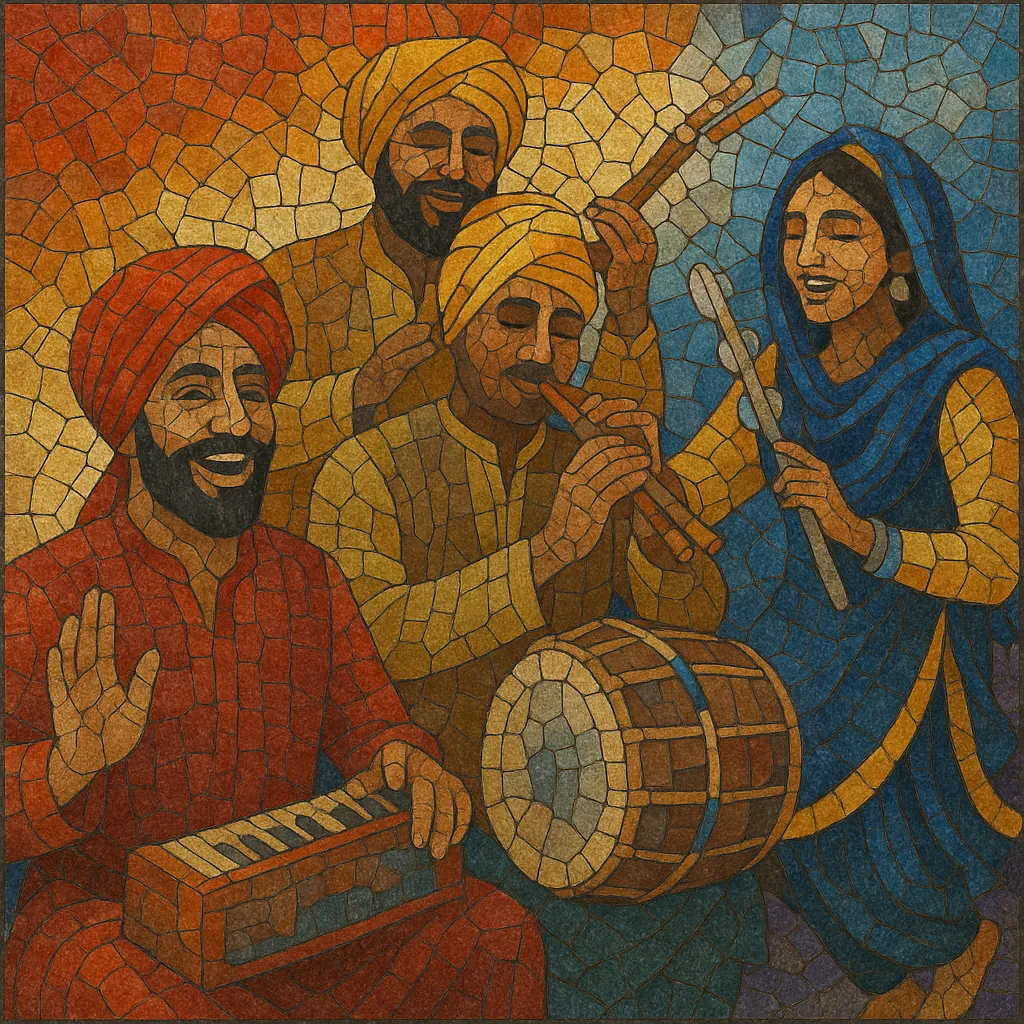Punjabi folk music is the traditional song and dance music of the Punjab region of South Asia, today divided between India and Pakistan. It encompasses a rich array of forms such as bhangra (harvest dance songs), giddha and boliyan (women’s call-and-response couplets), jhumar (lyrical, swaying songs), tappé, jugni (contemporary narrative refrains), and var/vaaṛ (ballads of heroes). Its sound is defined by energetic dhol and dholki drums, bright tumbi and chimta riffs, breathy twin-flute lines on algoza, and expressive vocals often supported by harmonium and drone.
Themes span agrarian life, love and weddings, playful teasing, devotional mysticism, and heroic epics. The music is typically modal and largely monophonic, featuring microtonal ornamentation, robust call-and-response, and powerful group choruses. It accompanies social celebrations—Vaisakhi harvest festivities, melas (fairs), and nuptial rites—where music, rhythmic clapping, and vibrant dance steps fuse into a communal experience.
Punjabi folk music coalesced across the 1700s from agrarian work songs, wedding repertoires, and itinerant minstrel (Mirasi, Dhadi) traditions that narrated local histories and heroic epics (var/vaaṛ). While rooted in village life, the repertory absorbed modal ideas and ornamentation from Hindustani classical practice, and poetic sensibilities from regional Sufi kafi and devotional singing (kirtan). Core instruments such as the dhol, dhad, tumbi, algoza, and sarangi became idiomatic, supporting soloists and communal call-and-response.
With the advent of print, radio, and early recording in the late 19th and early 20th centuries, Punjabi folk forms began circulating more widely. The 1947 Partition of India displaced communities and artists across newly formed borders, but also seeded distinct scenes around Lahore and Pakistani Punjab, and in Indian Punjab around Jalandhar and Amritsar. Broadcasting (e.g., All India Radio, Radio Pakistan) helped standardize and popularize folk repertoires for urban listeners.
Post-Partition decades witnessed iconic voices—such as Surinder Kaur, Asa Singh Mastana, and Yamla Jatt—who recorded wedding songs, boliyan, and narrative forms that defined the genre’s canon. In parallel, festive bhangra dance music crystallized as a stage style, later finding new energy in the UK Punjabi diaspora, where amplified dhols, tumbi ostinati, and band instrumentation transformed village idioms for dancehalls.
From the 1990s onward, Punjabi folk aesthetics—particularly dhol-driven grooves and boliyan refrains—influenced Bollywood/filmi soundtracks and a host of pop and Asian Underground fusions. Artists revived rustic timbres (algoza, bugchu, chimta) alongside modern production, while community ensembles and festivals sustained oral transmission of giddha, jhumar, and seasonal songs. Today the genre thrives across India and Pakistan and in diaspora hubs, balancing archival revival with contemporary cross-genre collaborations.


